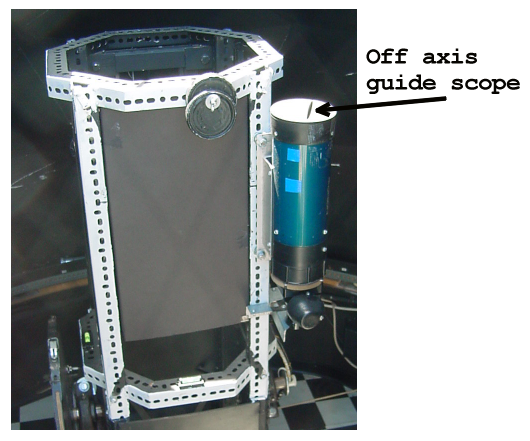
My first auto-guider setup used an off-axis scope and a secondary camera.
I used this system with "PHD Guiding" to auto-guide. This system was great, allowing
me to keep a star field reasonably within the imaging camera's field for hours.
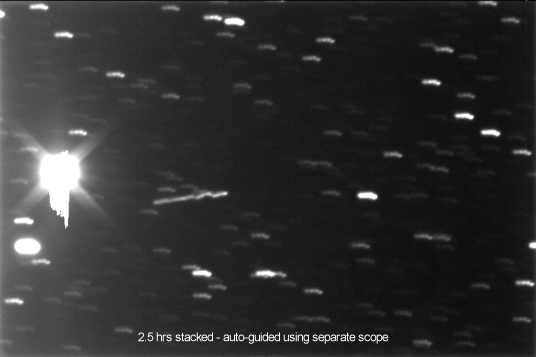
However, in spite of great efforts to keep the two telescopes rigidly aligned
to each other there remained some flex and the guide scope did not track with
the imaging camera with "precision" over an extended period.
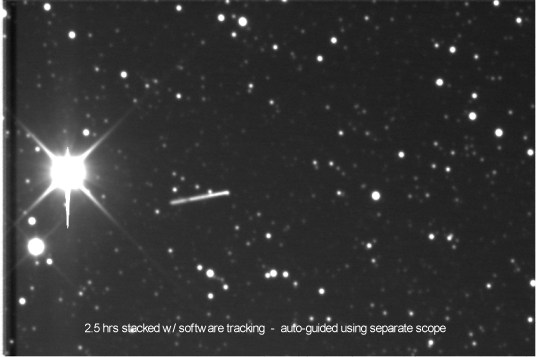
So it was necessary to use software "tracking" to stack long term images.
For best accuracy in photometry, it is necessary to keep all stars on the
same set of pixels. It is evident that this system did not perform at that level.
There are several approaches to improve auto-guiding accuracy.
For best accuracy it is necessary that the guider uses the same optical path as the imager.
Many cameras have an "out of frame" pick-off mirror to intercept a guide star.
There are also several add-ons that provide a pick-off for an out of frame star for guiding.
I chose to build a pellicle guider. The pellicle mirror transmits most of the incident light
but reflects a small fraction of the light. The reflected light is directed to the guide camera.
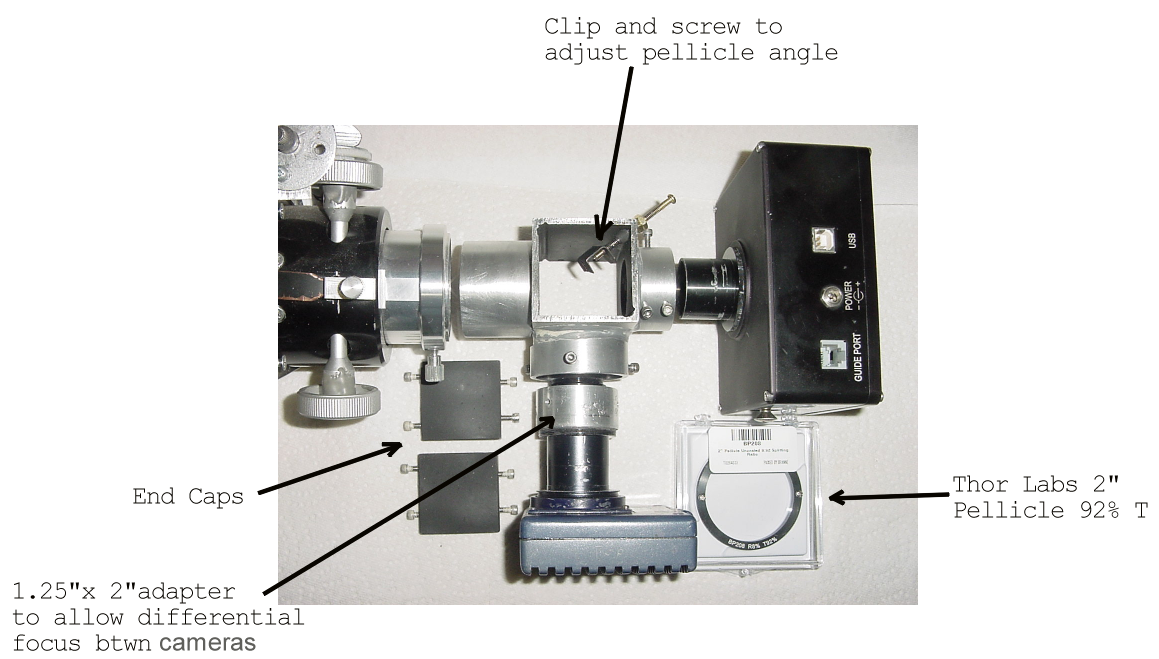
Materials used for this project:
The base is 2" square aluminum tube.
The focuser, and camera adapters are made from aluminum tubing of appropriate diameters.
The pellicle mirror is 2" diameter from Thor Labs
The parts are cemented together using "J-B Weld" epoxy cement.
The pellicle mount just fits diagonally into the square tube with a bit filing.
I used elastic hair bands to hold the pellicle in place. The bands are stretched reducing
the diameter, when they are "relaxed" the diameter increases and holds the pellicle in place.
NOTE: the pellicle film is VERY fragile, do not touch!!
There is a small clip and machine screw to adjust and hold the angle of the pellicle.
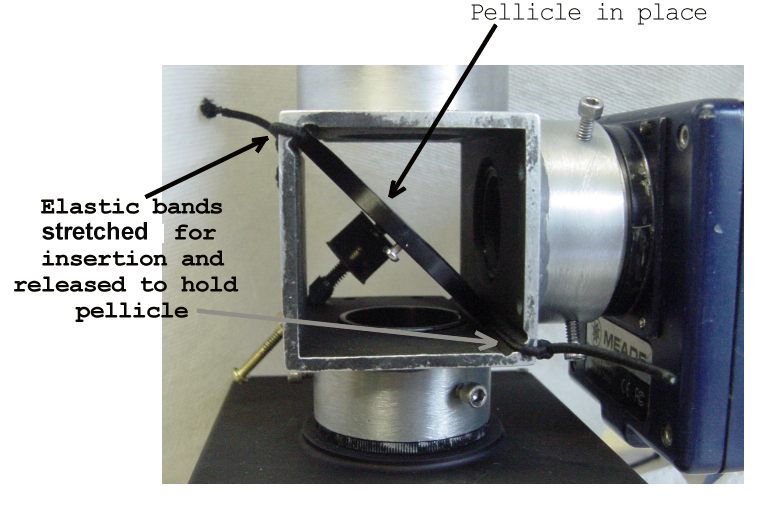
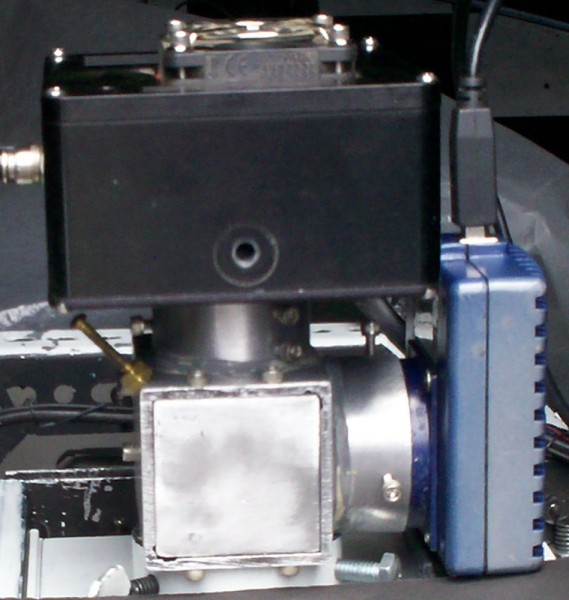
So how well does this work? The proof is in the images.
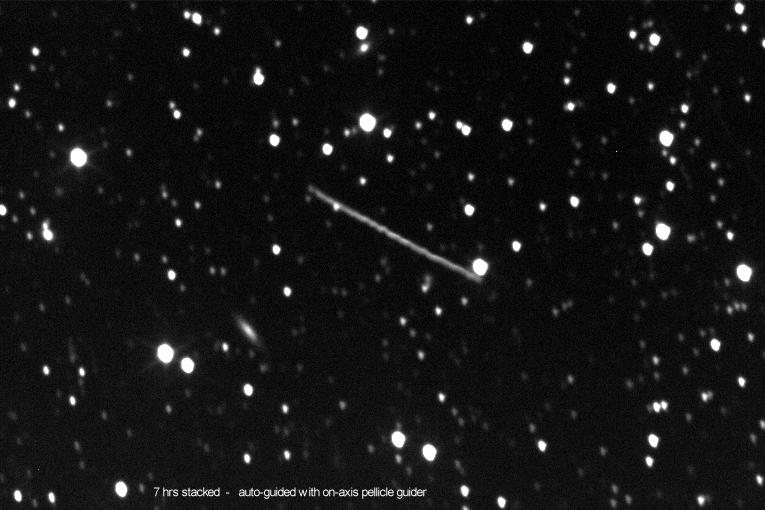
This image is a stack of raw images with no software tracking.
It is more than 400 frames taken over a period of 7 hours.
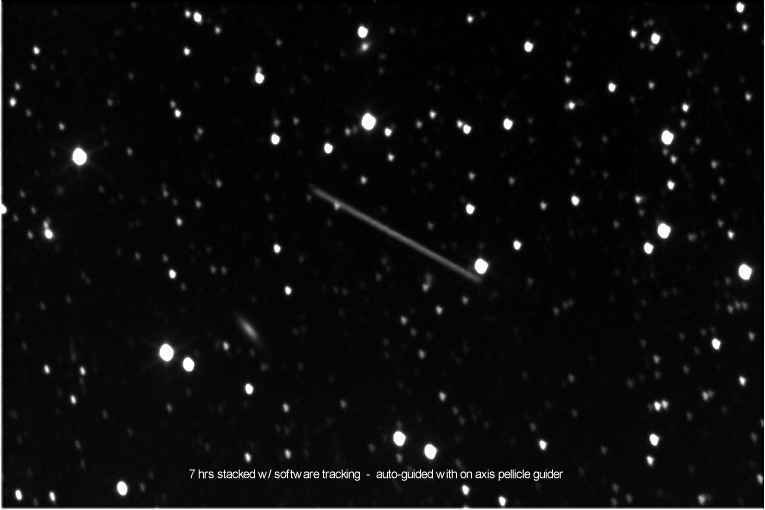
This is the same set of images stacked with software tracking. The improvement is noticeable
but the poor focus of the image set is more evident than the guiding defects.
The streak across the frame is an asteroid.
The 8% loss of light to the imaging camera is a small price to pay for the dramatic increase
in tracking. After tuning "PHD Guiding" and getting a good balance on the telescope,
the raw stacked images are now frequently as good as the software tracked image stacks.
The light directed to the guide camera (Meade DSI Pro-II) is enough to allow tracking
on 12th magnitude stars with 1 second exposures. Normally there is at least one good 12th magnitude
or brighter star in a field. Extending the exposure (rarely done) to more than 1 second will
get an adequate guide star in any star field.
Since the guide camera "sees" the whole imaging camera field, there is no need to
re-orient the camera to get a guide star. Thus all imaging is done without changing
configuration, allowing the use of the same flats for any number of star fields.
Also, the imaging camera's filter wheel is in the optical path after
the pellicle so the guide camera's light path is not filtered.
Here a some links to similar projects:
Pellicle autoguider, Gary Cole
Poor Man's Beam Splitter, Russ Genet
Orlando Andico: Poor Man's On-Axis Guider
Below is an analysis of the tracking accuracy of this system.
The images are from the HAT-P-38 star field
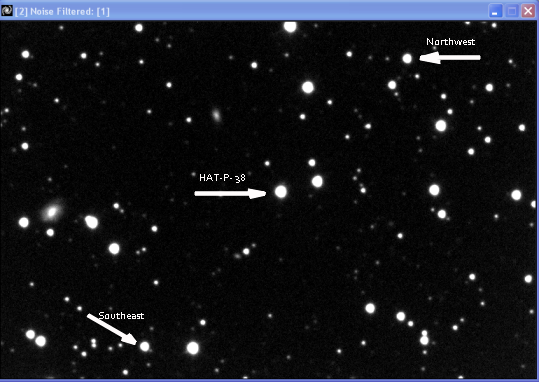
This analysis uses 490 images taken over a period of 8 hours and 18 minutes
The telescope was guided by "PHD" guiding software. The guide camera was
a Meade DSI pro II.
Three stars in the field were measured as shown in the image above.
Scatter plots of the X and Y pixel centroids are presented below.
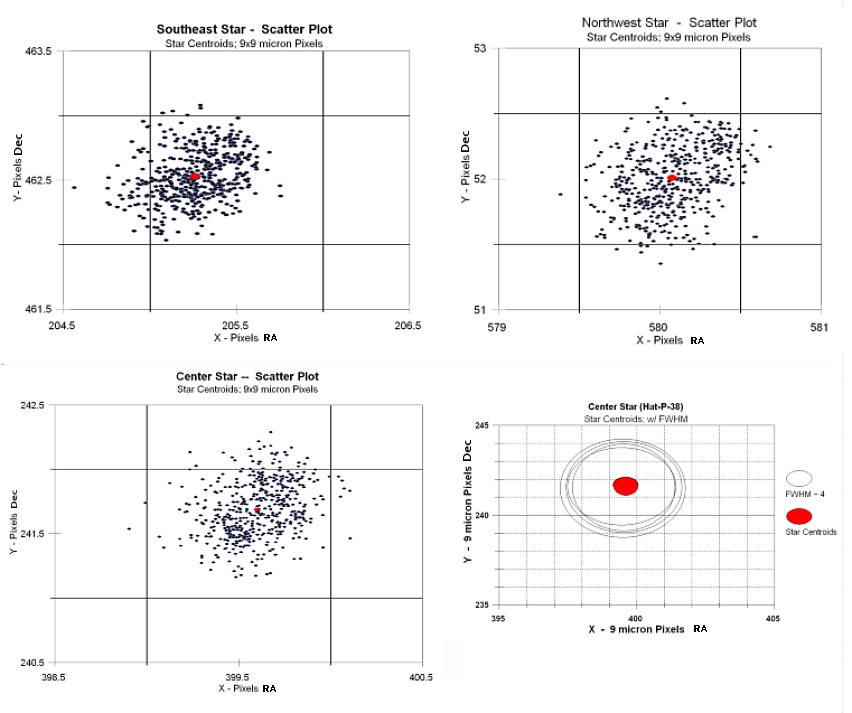
It is seen that the star centroids nominally fall within a single 9 x 9 micron box, the size of a pixel.
Plotting the star profiles at FWHM (4 pixels) for the seeing at this site shows that the image half-height covers 16 pixels ±.
Repeating this exercise with a high declination star XO 001.0729; at
De = 85:14
Shows a rotation over the night indicating that the polar alginment is a bit off.
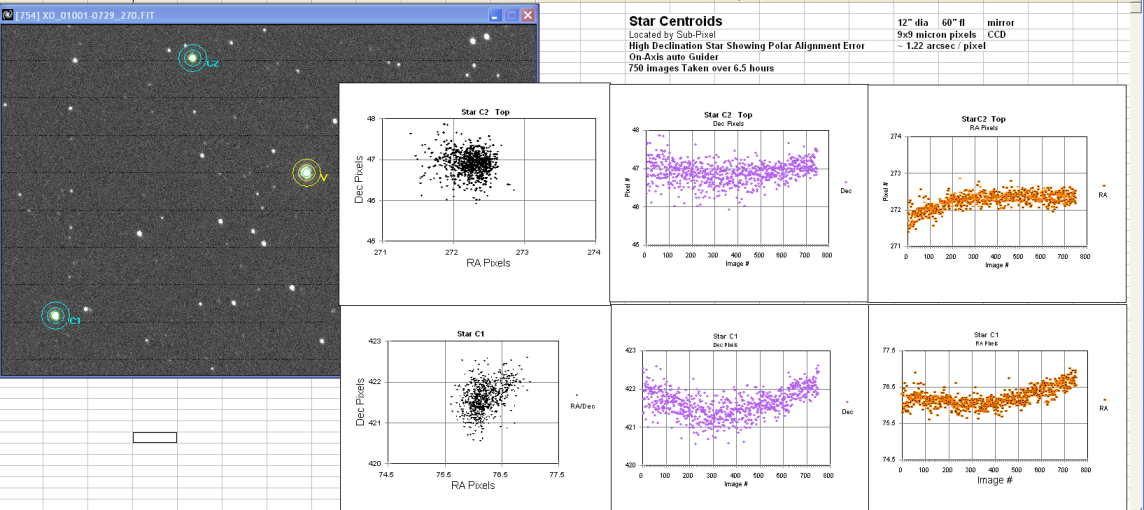
The telescope used is an f/5, 12" newtonian with an SBIG ST402 ccd mounted at prime focus.
The camera has 9 x 9 micron pixels.